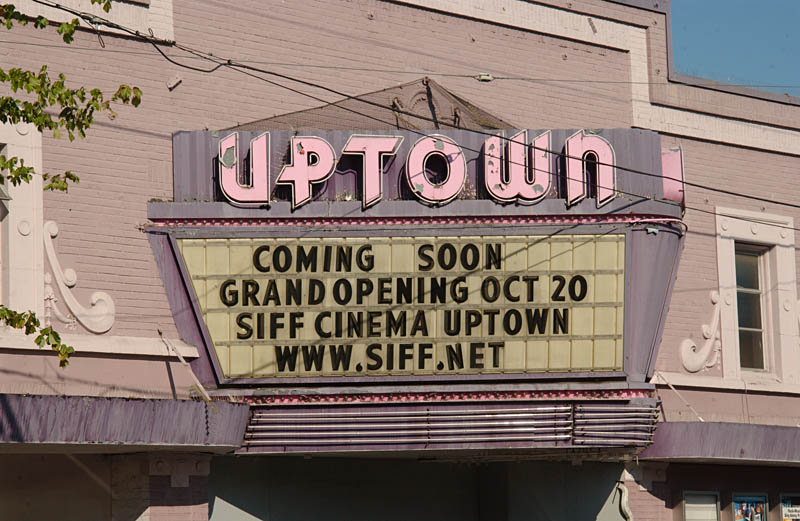It wasn’t supposed to work this way, explains SIFF artistic director Carl Spence, sitting in what was planned to the nonprofit’s only new screen this fall. We’re in a small cinema—with 100 seats salvaged from the Cinerama balcony—inside what used to be the Alki Room at Seattle Center. “It wasn’t really in the plan to find another theater to open,” says Spence, since the Seattle International Film Festival had already raised some $2.8 million to refurbish the Alki Room into a new, permanent home called the SIFF Film Center. And it already had a sweet deal in place with the city to operate a cinema beneath McCaw Hall, just steps away. “We only had to pay for it when were were using it,” says Spence—one reason that programming has been intermittent there during the past four years.
But last fall, he continues, “We heard through the grapevine that [the Uptown] was going to close. So I started talking to AMC to take over the remaining portion of the lease. It’s about five years.” (AMC is a large exhibitor that operates Pacific Place and hundreds of multiplexes nationwide; a trust with Seattle roots, Moritz Family LLC, owns the Lower Queen Anne property.)
A grand opening for both venues is set for the Oct. 20–23 weekend, when the Uptown will run three sing-alongs (Hedwig and the Angry Inch, Purple Rain, and Grease), plus old favorites that previously played there, which SIFF is soliciting from filmgoers on its website. The Film Center has its soft opening this Friday with Nora’s Will (see review, page 82).
“This is our permanent home,” says Spence proudly, while touring me around the Film Center building, originally designed by Paul Thiry for the 1962 World’s Fair and smartly renovated by Owen Richards Architects. There’s a snack bar, offices (some leased to The Film School, a separate entity, which will conduct classes upstairs), a comfy mezzanine (“maybe we’ll have a little bar up here”), and a second small screening room—which multiplies SIFF’s potential programming, outside the annual festival, by a factor of five.
The old SIFF Cinema at McCaw Hall was lovely inside. Outside on Mercer, however, was a different matter: no pedestrian traffic, bleak sidewalks, speeding cars, nothing to make you linger after a movie. While acknowledging such limitations, Spence avows, “This year we doubled our attendance [at McCaw]. We also knew it wasn’t the ideal situation to share with other organizations”—including PNB or anyone else who wanted to use McCaw’s basement.
Speaking about the Uptown, four blocks west of the Film Center, he’s understandably positive. “The difference is, you come outside the theater and you have restaurants and shops. It provides us much more visibility. It means we’re guaranteed a three-screen multiplex during the festival. The Uptown is the icing on the cake.”
And it may prove to be an important money-maker for SIFF, placing it in direct competition with Landmark’s art-house cinemas (the Metro, Seven Gables, Harvard Exit, etc.). “One screen will be devoted to repertory,” says Spence. “The other two screens will be a mix of art-house and theatrical. We’re not going after blockbusters. But if we’d had the Uptown last year, we would’ve gone after The King’s Speech and Black Swan.”
Yet if the economy improves enough in five years, the Uptown’s property owners might decide to sell to a condo developer, as SIFF is aware. “That’s the big gamble,” Spence admits.
Still, he says SIFF’s goal for the Uptown is “to prevent it from being closed down forever . . . to save that filmgoing institution. Films have been showing there for 84 years. We weren’t planning for it. But AMC left everything”—meaning the seats, projectors, etc. “They’d kept it in good condition. And we’re going be moving our projectors there from McCaw Hall.”
And unlike McCaw Hall, SIFF now has the financial imperative to keep the Uptown marquee lit seven days a week, 12 months a year, since it’s paying regular rent. But beyond the May–June festival, will SIFF keep all three screens programmed?
“We will, because it costs about the same to operate,” Spence says, because one projectionist is capable of running three prints. “That’s the beauty of a multiplex.”








